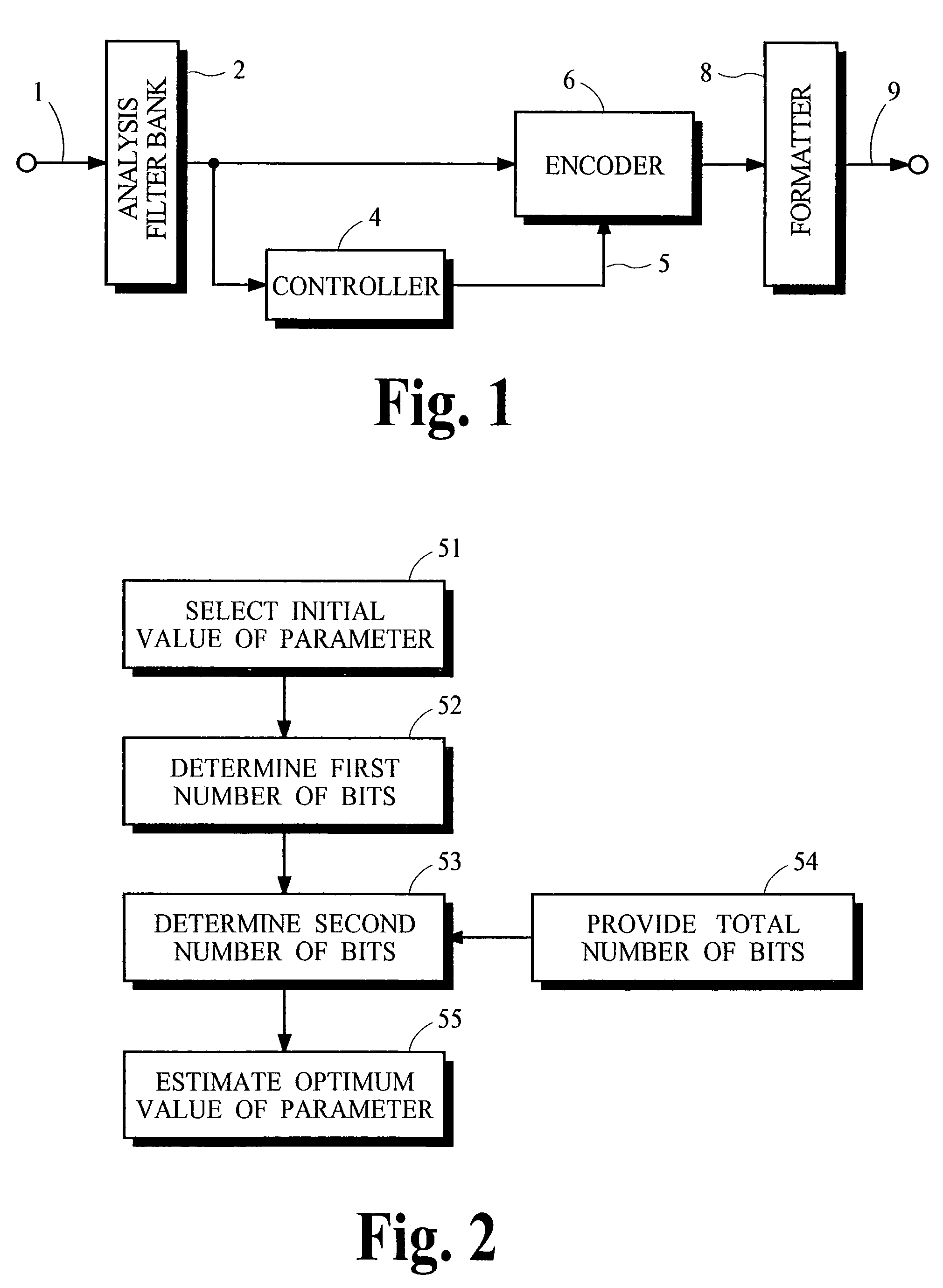Reduced computational complexity of bit allocation for perceptual coding
a computational complexity and perceptual coding technology, applied in the field of perceptual coding, can solve the problems of introducing higher levels of quantization errors or “quantization noise” into the signal, the allocation process requires significant computational resources, and the allocation of bit allocations cannot be easily determined, so as to achieve the effect of fewer computational resources and optimal values
- Summary
- Abstract
- Description
- Claims
- Application Information
AI Technical Summary
Benefits of technology
Problems solved by technology
Method used
Image
Examples
Embodiment Construction
A. Introduction
[0016]The present invention provides for efficient implementations of bit allocation procedures that are suitable for use in perceptual coding systems. These bit allocation procedures may be incorporated into transmitters comprising encoders or transcoders that provide encoded bit streams such as those that conform to the encoded bit-stream standard described in the Advanced Television Systems Committee (ATSC) A / 52A document entitled “Revision A to Digital Audio Compression (AC-3) Standard” published Aug. 20, 2001, which is incorporated herein by reference in its entirety. Specific implementations for encoders that conform to this ATSC standard are described below; however, various aspects of the present invention may be incorporated into devices for use in a wide variety of coding systems.
[0017]FIG. 1 illustrates a transmitter with a perceptual encoder that may be incorporated into a coding system that conforms to the ATSC standard mentioned above. This transmitter a...
PUM
 Login to View More
Login to View More Abstract
Description
Claims
Application Information
 Login to View More
Login to View More - R&D
- Intellectual Property
- Life Sciences
- Materials
- Tech Scout
- Unparalleled Data Quality
- Higher Quality Content
- 60% Fewer Hallucinations
Browse by: Latest US Patents, China's latest patents, Technical Efficacy Thesaurus, Application Domain, Technology Topic, Popular Technical Reports.
© 2025 PatSnap. All rights reserved.Legal|Privacy policy|Modern Slavery Act Transparency Statement|Sitemap|About US| Contact US: help@patsnap.com



